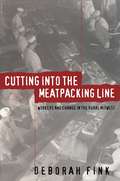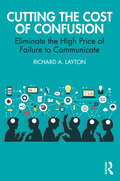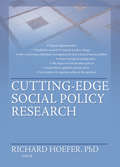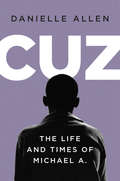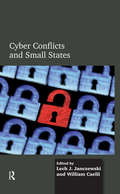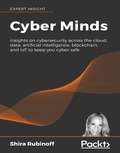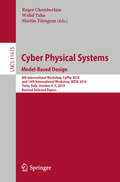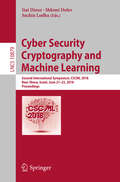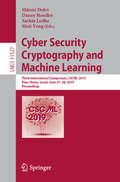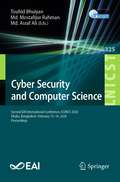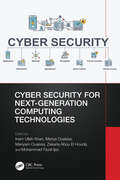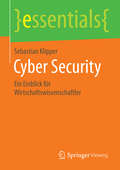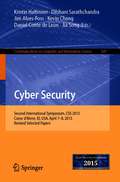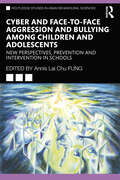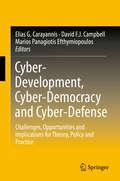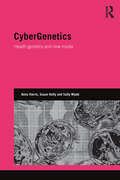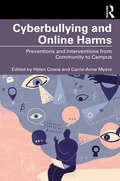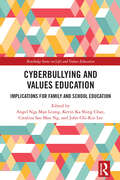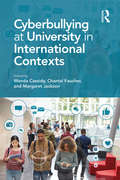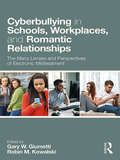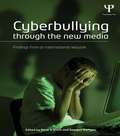- Table View
- List View
Cutting Into the Meatpacking Line
by Deborah FinkThe nostalgic vision of a rural Midwest populated by independent family farmers hides the reality that rural wage labor has been integral to the region's development, says Deborah Fink. Focusing on the porkpacking industry in Iowa, Fink investigates the experience of the rural working class and highlights its significance in shaping the state's economic, political, and social contours. Fink draws both on interviews and on her own firsthand experience working on the production floor of a pork-processing plant. She weaves a fascinating account of the meatpacking industry's history in Iowa--a history, she notes, that has been experienced differently by male and female, immigrant and native-born, white and black workers. Indeed, argues Fink, these differences are a key factor in the ongoing creation of the rural working class. Other writers have denounced the new meatpacking companies for their ruthless destruction of both workers and communities. Fink sustains this criticism, which she augments with a discussion of union action, but also goes beyond it. She looks within rural midwestern culture itself to examine the class, gender, and ethnic contradictions that allowed--indeed welcomed--the meatpacking industry's development.
Cutting the Cost of Confusion: Eliminate the High Price of Failure to Communicate
by Richard A. LaytonConfusion is more than just another daily inconvenience, though its impacts are often hidden in metrics such as market share, productivity, and ROI. This book shows how to identify and eliminate the Cost of Confusion in workplaces, marketplaces, and communities. Cutting that cost demands the ability to distill, integrate, and synthesize ever more complex information from a broad range of perspectives and disciplines. Any gaps in understanding can and do negatively impact performance. Based on Richard Layton’s 20 years of experience helping organizations to be heard and understood, this book offers a powerful universal lens to view the costly impacts of confusion, and provides a framework to identify and manage the risk of failure to communicate with a range of stakeholders and audiences – and save millions of dollars in the process. Decision-makers, practitioners, and students in marketing and advertising, organizational development, knowledge management, information technology, project management, and other fields will appreciate this unique set of insights and tools they can employ to great effect within their companies, organizations, and public institutions.
Cutting the Cost of Confusion: Eliminate the High Price of Failure to Communicate
by Richard LaytonConfusion is more than just another daily inconvenience, though its impacts are often hidden in metrics such as market share, productivity, and ROI. This book shows how to identify and eliminate the Cost of Confusion in workplaces, marketplaces, and communities.Cutting that cost demands the ability to distill, integrate, and synthesize ever more complex information from a broad range of perspectives and disciplines. Any gaps in understanding can and do negatively impact performance. Based on Richard Layton’s 20 years of experience helping organizations to be heard and understood, this book offers a powerful universal lens to view the costly impacts of confusion, and provides a framework to identify and manage the risk of failure to communicate with a range of stakeholders and audiences – and save millions of dollars in the process. Decision-makers, practitioners, and students in marketing and advertising, organizational development, knowledge management, information technology, project management, and other fields will appreciate this unique set of insights and tools they can employ to great effect within their companies, organizations, and public institutions.
Cutting-Edge Social Policy Research
by Richard HoeferApply knowledge from the latest research to urgent social problems and programsCutting-Edge Social Policy Research is a careful selection of the finest papers from the 2004 Social Policy Conference held in Charleston, South Carolina. These presentations from respected experts spotlight the latest and best research on a wide variety of crucial social policy issues. Explanations are provided on how to use qualitative and quantitative methods to research social policy questions, with a clear view on how to apply research results to today&’s social problems and programs.Cutting-Edge Social Policy Research discusses various social policy topics, approaches, and the latest high-quality research and findings. Students learn how others have researched the topics using different approaches, while practitioners gain important new information relevant to their jobs and practice areas. Chapters explore vital perspectives, such as how to link program evaluation to policy practice, how clients&’ "in their own voices" views bring more convincing rationale to policymakers, and how the "trauma perspective" can spotlight the true effects of poverty, inequality, and oppression in our society. The text includes extensive up-to-date bibliographies and literature reviews.Topics in Cutting-Edge Social Policy Research include: measuring program implementation-to differentiate between theories that don&’t work and programs that aren&’t effective inclusion of qualitative methods into research in social policy the latest quality-of-life research for the elderly in nursing homes effective intervention practices for deaf and hard of hearing children susceptible to abuse in-depth analysis of the eight variables of the Section 8 Housing Program policy process trauma theory and its application to poverty policy the impact of work incentive policies examination of state and local governments granting large tax breaks to corporations-and the implications for social welfare practitionersCutting-Edge Social Policy Research is stimulating, insightful reading for practitioners, educators, and students in social policy, social work, sociology, and political science.
Cuz: The Life And Times Of Michael A.
by Danielle AllenSo tender yet courageous is this fierce family memoir that it makes mass incarceration nothing less than a new American tragedy. In a shattering work that shifts between a woman’s private anguish over the loss of her beloved baby cousin and a scholar’s fierce critique of the American prison system, Danielle Allen seeks answers to what, for many years, felt unanswerable. Why? Why did her cousin, a precocious young man who dreamed of being a firefighter and a writer, end up dead? Why did he languish in prison? And why, at the age of fifteen, was he in an alley in South Central Los Angeles, holding a gun while trying to steal someone’s car? Cuz means both “cousin” and “because.” In this searing memoir, Allen unfurls a "new American story" about a world tragically transformed by the sudden availability of narcotics and the rise of street gangs—a collision, followed by a reactionary War on Drugs, that would devastate not only South Central L.A. but virtually every urban center in the nation. At thirteen, sensitive, talkative Michael Allen was suddenly tossed into this cauldron, a violent world where he would be tried at fifteen as an adult for an attempted carjacking, and where he would be sent, along with an entire generation, cascading into the spiral of the Los Angeles prison system. Throughout her cousin Michael’s eleven years in prison, Danielle Allen—who became a dean at the University of Chicago at the age of thirty-two—remained psychically bonded to her self-appointed charge, visiting Michael in prison and corresponding with him regularly. When she finally welcomed her baby cousin home, she adopted the role of "cousin on duty," devotedly supporting Michael’s fresh start while juggling the demands of her own academic career. As Cuz heartbreakingly reveals, even Allen’s devotion, as unwavering as it was, could not save Michael from the brutal realities encountered by newly released young men navigating the streets of South Central. The corrosive entanglements of gang warfare, combined with a star-crossed love for a gorgeous woman driving a gold Mercedes, would ultimately be Michael’s undoing. In this Ellisonian story of a young African American man’s coming-of-age in late twentieth-century America, and of the family who will always love Michael, we learn how we lost an entire generation.
Cyber Conflicts and Small States
by Lech J. Janczewski William CaelliThe probability of a world-wide cyber conflict is small. Yet the probability of forms of cyber conflict, regional or even global, could be argued as being very high. Small countries are usually signatories to military and economic alliances with major world powers but rely heavily on the technical ability of these powers in protecting their own national interests. They may be considered to be IT ’technology colonies’. Their cyber infrastructure is usually fully imported and their ability to assess it is limited. This book poses the question: to what extent should, or can, a small country prepare itself for handling the broad range of cyber threats? Looking at cyber-warfare, cyber-terrorism, cyber-crime and associated concerns, national experts from New Zealand, Australia, The Netherlands, and Poland present analyses of cyber-defence realities, priorities and options for smaller countries. They show that what is needed is the ability of small nations to be able to define and prepare appropriate responses such as the role of military/law enforcement/business entities, continuity and resilience strategies, incident response and business continuity plans and more for handing nationally-aimed cyber-attacks particularly where these address national critical infrastructures.
Cyber Minds: Insights on cybersecurity across the cloud, data, artificial intelligence, blockchain, and IoT to keep you cyber safe
by Shira RubinoffCyber Minds brings together an unrivalled panel of international experts who offer their insights into current cybersecurity issues in the military, business, and government. Key Features Explore the latest developments in cybersecurity Hear expert insight from the industry's top practitioners Dive deep into cyber threats in business, government, and military Book Description Shira Rubinoff's Cyber Minds brings together the top authorities in cybersecurity to discuss the emergent threats that face industries, societies, militaries, and governments today. With new technology threats, rising international tensions, and state-sponsored cyber attacks, cybersecurity is more important than ever. Cyber Minds serves as a strategic briefing on cybersecurity and data safety, collecting expert insights from sector security leaders, including: General Gregory Touhill, former Federal Chief Information Security Officer of the United States Kevin L. Jackson, CEO and Founder, GovCloud Mark Lynd, Digital Business Leader, NETSYNC Joseph Steinberg, Internet Security advisor and thought leader Jim Reavis, Co-Founder and CEO, Cloud Security Alliance Dr. Tom Kellerman, Chief Cybersecurity Officer for Carbon Black Inc and Vice Chair of Strategic Cyber Ventures Board Mary Ann Davidson, Chief Security Officer, Oracle Dr. Sally Eaves, Emergent Technology CTO, Global Strategy Advisor – Blockchain AI FinTech, Social Impact award winner, keynote speaker and author Dr. Guenther Dobrauz, Partner with PwC in Zurich and Leader of PwC Legal Switzerland Barmak Meftah, President, AT&T Cybersecurity Cleve Adams, CEO, Site 1001 (AI and big data based smart building company) Ann Johnson, Corporate Vice President – Cybersecurity Solutions Group, Microsoft Barbara Humpton, CEO, Siemens USA Businesses and states depend on effective cybersecurity. This book will help you to arm and inform yourself on what you need to know to keep your business – or your country – safe. What you will learn The threats and opportunities presented by AI How to mitigate social engineering and other human threats Developing cybersecurity strategies for the cloud Major data breaches, their causes, consequences, and key takeaways Blockchain applications for cybersecurity Implications of IoT and how to secure IoT services The role of security in cyberterrorism and state-sponsored cyber attacks Who this book is for This book is essential reading for business leaders, the C-Suite, board members, IT decision makers within an organization, and anyone with a responsibility for cybersecurity.
Cyber Physical Systems. Model-Based Design: 8th International Workshop, CyPhy 2018, and 14th International Workshop, WESE 2018, Turin, Italy, October 4–5, 2018, Revised Selected Papers (Lecture Notes in Computer Science #11615)
by Walid Taha Roger Chamberlain Martin TörngrenThis book constitutes the proceedings of the 8th International Workshop on Design, Modeling, and Evaluation of Cyber Physical Systems, CyPhy 2018 and 14th International Workshop on Embedded and Cyber-Physical Systems Education, WESE 2018, held in conjunction with ESWeek 2018, in Torino, Italy, in October 2018.The 13 full papers presented together with 1 short paper in this volume were carefully reviewed and selected from 18 submissions. The conference presents a wide range of domains including Modeling, simulation, verification, design, cyber-physical systems, embedded systems, real-time systems, safety, and reliability.
Cyber Security Cryptography and Machine Learning: Second International Symposium, CSCML 2018, Beer Sheva, Israel, June 21–22, 2018, Proceedings (Lecture Notes in Computer Science #10879)
by Shlomi Dolev Sachin Lodha Itai DinurThis book constitutes the refereed proceedings of the Second International Symposium on Cyber Security Cryptography and Machine Learning, CSCML 2018, held in Beer-Sheva, Israel, in June 2018. The 16 full and 6 short papers presented in this volume were carefully reviewed and selected from 44 submissions. They deal with the theory, design, analysis, implementation, or application of cyber security, cryptography and machine learning systems and networks, and conceptually innovative topics in the scope.
Cyber Security Cryptography and Machine Learning: Third International Symposium, CSCML 2019, Beer-Sheva, Israel, June 27–28, 2019, Proceedings (Lecture Notes in Computer Science #11527)
by Moti Yung Shlomi Dolev Sachin Lodha Danny HendlerThis book constitutes the refereed proceedings of the Third International Symposium on Cyber Security Cryptography and Machine Learning, CSCML 2019, held in Beer-Sheva, Israel, in June 2019.The 18 full and 10 short papers presented in this volume were carefully reviewed and selected from 36 submissions. They deal with the theory, design, analysis, implementation, or application of cyber security, cryptography and machine learning systems and networks, and conceptually innovative topics in these research areas.
Cyber Security and Computer Science: Second EAI International Conference, ICONCS 2020, Dhaka, Bangladesh, February 15-16, 2020, Proceedings (Lecture Notes of the Institute for Computer Sciences, Social Informatics and Telecommunications Engineering #325)
by Touhid Bhuiyan Md. Mostafijur Rahman Md. Asraf AliThis book constitutes the refereed post-conference proceedings of the Second International Conference on Cyber Security and Computer Science, ICONCS 2020, held in Dhaka, Bangladesh, in February 2020. The 58 full papers were carefully reviewed and selected from 133 submissions. The papers detail new ideas, inventions, and application experiences to cyber security systems. They are organized in topical sections on optimization problems; image steganography and risk analysis on web applications; machine learning in disease diagnosis and monitoring; computer vision and image processing in health care; text and speech processing; machine learning in health care; blockchain applications; computer vision and image processing in health care; malware analysis; computer vision; future technology applications; computer networks; machine learning on imbalanced data; computer security; Bangla language processing.
Cyber Security for Next-Generation Computing Technologies
by Mariya Ouaissa Mariyam Ouaissa Muhammad Fazal Ijaz Inam Ullah Khan Zakaria Abou El HoudaThis book sheds light on the cyber security challenges associated with nextgeneration computing technologies, emphasizing the serious threats posed to individuals, businesses, and nations. With everything becoming increasingly interconnected via the Internet, data security becomes paramount. As technology advances, people need to secure their data communication processes. Personal data security, including data integrity and confidentiality, is particularly vulnerable. Therefore, the concept of cyber security forensics emerges to ensure data security for everyone, addressing issues such as data control, hijacking, and threats to personal devices such as mobile phones, laptops, and other smart technologies. This book covers key topics related to cyber security in next-generation computing technologies, ultimately enhancing the quality of life for citizens, facilitating interaction with smart governments, and promoting secure communication processes. KEY FEATURES • Highlights innovative principles and practices using next generation computing technologies based cybersecurity. • Presents an introduction to recent trends regarding the convergence of AI/ML in cybersecurity • Offers an overview of theoretical, practical, simulation concepts of cybersecurity
Cyber Security: Ein Einblick für Wirtschaftswissenschaftler (essentials)
by Sebastian KlipperIn diesem Buch erfahren Wirtschaftswissenschaftler, wie Firmen nach Hackerangriffen vom Markt verschwinden und wie Hacker Aktienkurse beeinflussen können. Lernen Sie, wie Homo oeconomicus beim Thema Cyber Security zum Homo carens securitate wird und wie es gelingt, mithilfe der wirtschaftswissenschaftlichen ,,Brille" (oder: Perspektive/Sicht) ganz neue Lösungsansätze und Sichtweisen im Kampf gegen Wirtschaftsspione, Hacker und Cyber-Kriminelle zu erkennen. Cyber Security bzw. IT-Sicherheit ist ein Zukunftsthema, an dem kaum jemand vorbeikommt. Dieses Buch beschreibt anhand aktueller Vorfälle - ohne technisches Grundwissen vorauszusetzen -, was Ökonomen wissen müssen, um sich am Gespräch über eines der wichtigsten Zukunftsthemen unserer Zeit beteiligen zu können.
Cyber Security: Second International Symposium, CSS 2015, Coeur d'Alene, ID, USA, April 7-8, 2015, Revised Selected Papers (Communications in Computer and Information Science #589)
by Kristin Haltinner Dilshani Sarathchandra Jim Alves-Foss Kevin Chang Daniel Conte de Leon Jia SongThis book constitutes the refereed proceedings of the Second International Symposium on Cyber Security, CSS 2015, held in Coeur d'Alene, ID, USA, in April 2015. The 9 revised full papers presented were carefully reviewed and selected from 20 papers. The papers reflect four areas of scholarly work: permissions and trust evaluation, implementation and management; cloud and device security and privacy; social implications of networked and mobile applications; system and process assessments for improved cybersecurity.
Cyber and Face-to-Face Aggression and Bullying among Children and Adolescents: New Perspectives, Prevention and Intervention in Schools (Routledge Studies in Asian Behavioural Sciences)
by FUNG, Annis Lai ChuThe shift from face-to-face communication since the start of the global pandemic has resulted in more conflicts among children and adolescents on social media, and aggressive and bullying behaviour becoming more severe on online platforms such as Instagram, Facebook, Twitter/X, WhatsApp, and Signal. This book holistically discusses the theoretical foundations underlying face-to-face and cyberaggression and provides practical advice for preventing and intervening in both forms of aggression and bullying among schoolchildren and adolescents across different countries.It offers practical tools to address notable shifts in expressions of aggression from offline to online settings since the COVID-19 outbreak in both Eastern and Western contexts. With nine chapters contributed by experts from the USA, Canada, Spain, United Kingdom, Taiwan, Mainland China, and Hong Kong, the chapters offer cross-cultural insights, new definitions, theoretical frameworks, plus preventative and intervention strategies. The book also covers protective factors and issues related to both cyber and traditional forms of bullying and aggression. The book ends by forecasting future trends regarding online and offline aggression and bullying.The prevention and intervention strategies contained within for reducing both face-to-face and cyber aggression and bullying among children and adolescents provide invaluable insights to frontliners such as educators, teachers, social workers, counsellors, psychologists, parents, and policymakers. It will also appeal to researchers by providing cutting-edge knowledge and conceptualisation of online and traditional aggressive and bullying behaviour.
Cyber-Development, Cyber-Democracy and Cyber-Defense: Challenges, Opportunities and Implications for Theory, Policy and Practice
by Elias G. Carayannis David F. J. Campbell Marios Panagiotis EfthymiopoulosIn this volume, contributors from academia, industry, and policy explore the inter-connections among economic development, socio-political democracy and defense and security in the context of a profound transformation, spurred by globalization and supported by the rapid development of information and communication technologies (ICT). This powerful combination of forces is changing the way we live and redefining the way companies conduct business and national governments pursue strategies of innovation, economic growth and diplomacy. Integrating theoretical frameworks, empirical research and case studies, the editors and contributors have organized the chapters into three major sections, focusing on cyber-development, cyber-democracy and cyber-defense. The authors define cyber-development as a set of tools, methodologies and practices that leverage ICT to catalyze and accelerate social, political and economic development, with an emphasis on making the transition to knowledge-based economies. One underlying understanding here is that knowledge, knowledge creation, knowledge production and knowledge application (innovation) behave as crucial drivers for enhancing democracy, society, and the economy. By promoting dissemination and sharing of knowledge, cyber-democracy allows a knowledge conversion of the local into the global (gloCal) and vice versa, resulting in a gloCal platform for communication and knowledge interaction and knowledge enhancement Meanwhile, technology-enabled interconnectivity increases the need to adopt new methods and actions for protection against existing threats and possible challenges to emerge in the future The final section contemplates themes of cyber-defense and security, as well as emerging theories and values, legal aspects and trans-continental links (NATO, international organizations and bilateral relations between states) Collectively, the authors present a unique collection of insights and perspectives on the challenges and opportunities inspired by connectivity.
Cyber-Enabled Intelligence
by Liming Chen Huansheng Ning Ata Ullah Xiong LuoThe book provides an advanced vision and trends of computational intelligence in cyberspace and cyber-enabled spaces. It reviews architectures and models, as well as state-of-the-art computational and interpretation capabilities for social, industrial, and multimedia applications. Cyber-enabled intelligence involves the design and development of intelligent and innovative application scenarios in social networks, computer vision, multimedia, and image processing. Application scenarios can also cover the applicability of intelligent sensing, data collection and predictive analysis in Internet of Things.
CyberGenetics: Health genetics and new media (Genetics and Society)
by Susan Kelly Anna Harris Sally WyattOnline genetic testing services are increasingly being offered to consumers who are becoming exposed to, and knowledgeable about, new kinds of genetic technologies, as the launch of a 23andme genetic testing product in the UK testifies. Genetic research breakthroughs, cheek swabbing forensic pathologists and celebrities discovering their ancestral roots are littered throughout the North American, European and Australasian media landscapes. Genetic testing is now capturing the attention, and imagination, of hundreds of thousands of people who can not only buy genetic tests online, but can also go online to find relatives, share their results with strangers, sign up for personal DNA-based musical scores, and take part in research. This book critically examines this market of direct-to-consumer (DTC) genetic testing from a social science perspective, asking, what happens when genetics goes online?With a focus on genetic testing for disease, the book is about the new social arrangements which emerge when a traditionally clinical practice (genetic testing) is taken into new spaces (the internet). It examines the intersections of new genetics and new media by drawing from three different fields: internet studies; the sociology of health; and science and technology studies. While there has been a surge of research activity concerning DTC genetic testing, particularly in sociology, ethics and law, this is the first scholarly monograph on the topic, and the first book which brings together the social study of genetics and the social study of digital technologies. This book thus not only offers a new overview of this field, but also offers a unique contribution by attending to the digital, and by drawing upon empirical examples from our own research of DTC genetic testing websites (using online methods) and in-depth interviews in the United Kingdom with people using healthcare services.
Cyberbullying
by Juan Moises de la Serna Beatriz Sosa RebeloO cyberbullying é uma nova modalidade de assédio que qualquer pessoa pode vir a sofrer, mas a situação é especialmente preocupante quando se trata de menores. Neste breve manual são respondidas as perguntas mais importantes sobre este tema que todo pai com filhos em idade escolar deve ter em mente: O que é o Cyberbullying? Quais os efeitos do Cyberbullying? Pode se prevenir o Cyberbullying? e principalmente, O que fazer se nosso filho for vítima do Cyberbullying? Descubra todos os segredos sobre o Cyberbullying com os resultados das últimas pesquisas realizadas no âmbito da psicologia sobre o assunto.
Cyberbullying
by Juan Moises de la Serna Conchi FuentesCyberbullying is a modern form of harassment that anyone can suffer, but the situation is especially worrying when dealing with minors.This short guide presents answers to some of the most important questions on this subject that any parent with children of school age should bear in mind, such as: What is cyberbullying? How does cyberbullying affect people? Can cyberbullying be prevented? And, above all, what to do if your child is suffering from cyberbullying? Discover all the facts about cyberbullying, based on results from the latest research in the field of psychology on this matter.
Cyberbullying and Online Harms: Preventions and Interventions from Community to Campus
by Helen Cowie Carrie-Anne MyersCyberbullying and Online Harms identifies online harms and their impact on young people, from communities to campuses, exploring current and future interventions to reduce and prevent online harassment and aggression. This important resource brings together eminent international researchers whose work shines a light on social issues such as bullying/cyberbullying, racism, homophobia, hate crime, and social exclusion. The text collates into one volume current knowledge and evidence of cyberbullying and its effect on young people, facilitating action to protect victims, challenge perpetrators and develop policies and practices to change cultures that are discriminatory and divisive. It also provides a space where those who have suffered online harms and who have often been silenced in the past may have a voice in telling their experiences and recounting interventions and policies that helped them to create safer spaces in which to live in their community, study in their educational institutions and socialise with their peer group. This is essential reading for researchers, academics, undergraduates and postgraduates in sociology, psychology, criminology, media and communication studies, as well as practitioners and policymakers in psychology, education, sociology, criminology, psychiatry, counselling and psychotherapy, and anyone concerned with the issue of bullying, cyberbullying and online harms among young people in higher education.
Cyberbullying and Values Education: Implications for Family and School Education (Routledge Series on Life and Values Education)
by John Chi-Kin Lee Angel Nga Man Leung Kevin Ka Shing Chan Catalina Sau Man NgWritten by scholars from both the Western and Chinese contexts, this monograph discusses the relation between cyberbullying and socio-emotional-moral competencies, feasible interventions by integrating values education, and provides future directions in the field of cyberpsychology. Cyberbullying has become a growing concern in the digital age as it brings devastating impacts on its victims. Educating the younger generation, particularly through values education, also known as character, moral, or social-emotional learning, helps equip children and adolescents with the necessary ethical and moral attitudes, and foster the necessary socio-emotional competencies for them to navigate the digital world as responsible cyber-citizens. A central focus of the book is intervention and education. Cultivating competences and responsible use of technology in the younger generation through values education and evidence-based intervention helps combat cyberbullying. Families, schools, and communities can work together with suitable school programs, teacher education, and parents/school collaboration to help students cope with cyberbullying and create safer online spaces for them. Technology itself is not inherently good or bad but shaped by human choices and values. Supported by empirical evidence and theoretical insights, this book suggests ways to promote moral and emotional skills, foster digital citizenship, and encourage ethical technology design. This book provides a comprehensive understanding of cyberbullying. This timely resource will contribute to creating a safer and more positive online environment for all. It will inform researchers, educators, parents, and the community in combating cyberbullying by enabling children and adolescents to be responsible, ethical, and happy netizens.
Cyberbullying at University in International Contexts
by Margaret Jackson Wanda Cassidy Chantal FaucherCyberbullying is a problem that is being increasingly investigated by researchers, however, much of the cyberbullying research literature to date has focused on children and youth. Cyberbullying at University in International Contexts fills the gap in the research literature by examining the nature, extent, impacts, proposed solutions, and policy and practice considerations of bullying in the cyber-world at post-secondary institutions, where reports of serious cyberbullying incidents have become more prevalent. This book brings together cutting-edge research from around the world to examine the issue of cyberbullying through a multi-disciplinary lens, offering an array of approaches, interpretations, and solutions. It is not solely focused on cyberbullying by and against students, but also includes cyberbullying by and against faculty members, and permutations involving both students and faculty, as well as institutional staff, presenting perspectives from students, practitioners and senior university policy makers. It draws on research from education, criminology, psychology, sociology, communications, law, health sciences, social work, humanities, labour studies and is valuable reading for graduate students in these fields. It is also essential reading for policymakers, practitioners and University administrators who recognize their responsibility to provide a healthy workplace for their staff, as well as a safe and respectful environment for their students.
Cyberbullying in Schools, Workplaces, and Romantic Relationships: The Many Lenses and Perspectives of Electronic Mistreatment
by Robin M. Kowalski Gary W. GiumettiThis volume brings together research on cyberbullying across contexts, age groups, and cultures to gain a fuller perspective of the prevalence and impact of electronic mistreatment on individual, group, and organizational outcomes. This is the first book to integrate research on cyberbullying across three contexts: schools, workplaces, and romantic relationships, providing a unique synthesis of lifespan contexts.For each context, the expert chapter authors bring together three different 'lenses': existing research on the predictors and outcomes of cyberbullying within that context; a cross-cultural review across national borders and cultural boundaries; and a developmental perspective that examines age-related differences in cyberbullying within that context. The book closes by drawing commonalities across these different contexts leading to a richer understanding of cyberbullying as a whole and some possible avenues for future research and practice.This is fascinating reading for researchers and upper-level students in social psychology, counseling, school psychology, industrial-organizational psychology, and developmental psychology, as well as educators and administrators.
Cyberbullying through the New Media: Findings from an international network
by Peter K. Smith Georges SteffgenCyberbullying is one of the darker and more troubling aspects to the growing accessibility of new media technologies. Children in developed countries engage with cyberspace at younger and younger ages, and the use of the internet as a means to bully and harass has been greeted with alarm by educationalists, parents, the media, and governments. This important new book is the result of a four-year international collaboration, funded by the EU, to better understand how we can cope and confront cyberbullying, and how new media technologies can be used to actually support the victims of such abuse. The articles initially define the historical and theoretical context to cyberbullying, before examining key issues involved in managing this pervasive phenomenon. Coverage includes: The definition and measurement of cyberbullying. The legal challenges in tackling cyberbullying across a number of international contexts. The role of mobile phone companies and Internet service providers in monitoring and prevention How the media frame and present the issue, and how that influences our understanding. How victims can cope with the effects of cyberbullying, and the guidelines and advice provided in different countries. How cyber-bullying can continue from school into further education, and the strategies that can be used to prevent it. The ways in which accessing 'youth voice', or maximising the contribution of young people themselves to the research process, can enhance our understanding The book concludes with practical guidance to help confront the trauma that cyberbullying can cause. It will be a valuable resource for researchers, students, policy makers and administrators with an interest in how children and young people are rendered vulnerable to bullying and harassment through a variety of online channels.
